This is a post from several years ago when I did Renaissance artists for my A-Z challenge.
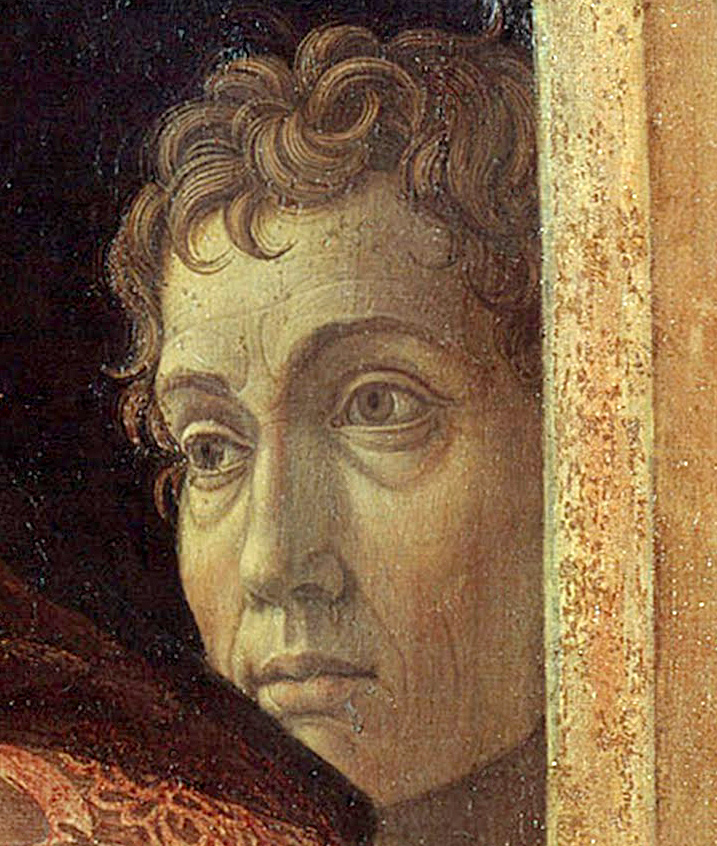
Andrea Mantegna (c. 1431 – September 13, 1506) was an Italian painter and a student of Roman archeology. He was the first to experiment with perspective, in which objects become smaller as their distance from the observer increases, and foreshortening, whereby an object’s dimensions along the receding line of sight are shorter than dimensions across the line of sight. He is also one of my favorite artists of the period because he drew figures with accurate anatomical features. This is a little longer than my other blogs because I find this artist so fascinating.
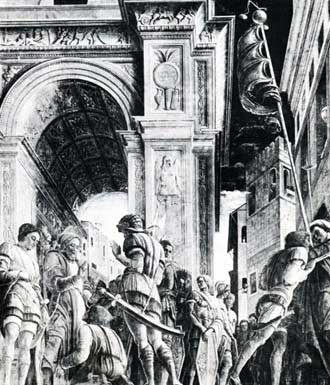
Mantegna was born close to Padua, part of the Republic of Venice. At eleven, he became the apprentice of Francesco Squarcione, a painter interested in the ancient art and architecture of Rome and Greece. Mantegna was said to be a favorite pupil, and during this time Squarcione and his pupils, including Mantegna, began the series of frescoes in the church of Sant’ Agostino degli Eremitani, almost entirely lost in the 1944 allied bombings of Padua. One of these, St. James Being Led to his Execution, is clearly Mantegna’s but only old photographs exist today. It is notable for his worms-eye view of the scene and is a good example of the artist’s understanding of perspective.
At the ripe age of seventeen, Mantegna left Squarcione’s studio for the Venetian art firm of Jacopo Bellini, claiming Squarcione exploited him.
Mantegna’s early style is best represented by the Agony in the Garden, painted in 1455.
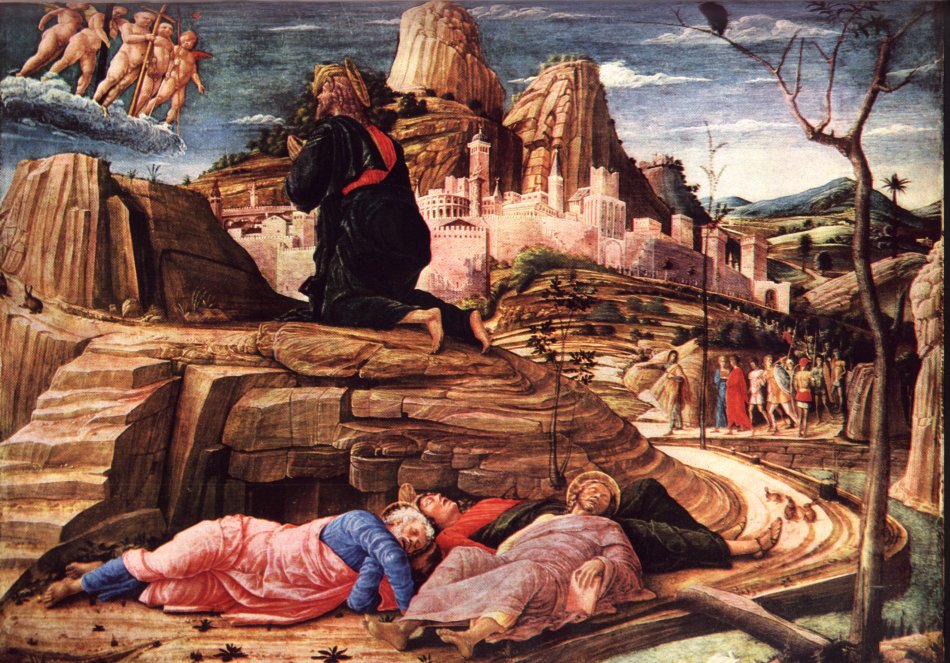
Note the angels in the upper left, with the disciples sleeping in the foreground. In the background, Judas comes with soldiers to arrest Christ. Jerusalem is depicted as a walled city, with monuments more suitable to Rome (an equestrian statue, a column with relief sculpture), undoubtedly from the influence of Squarcione.
In Verona around 1459, he painted an altarpiece for the church of San Zeno Maggiore, depicting a Madonna and angels, with four saints on each side. Note the use of classical details and perspective in all of the panels.
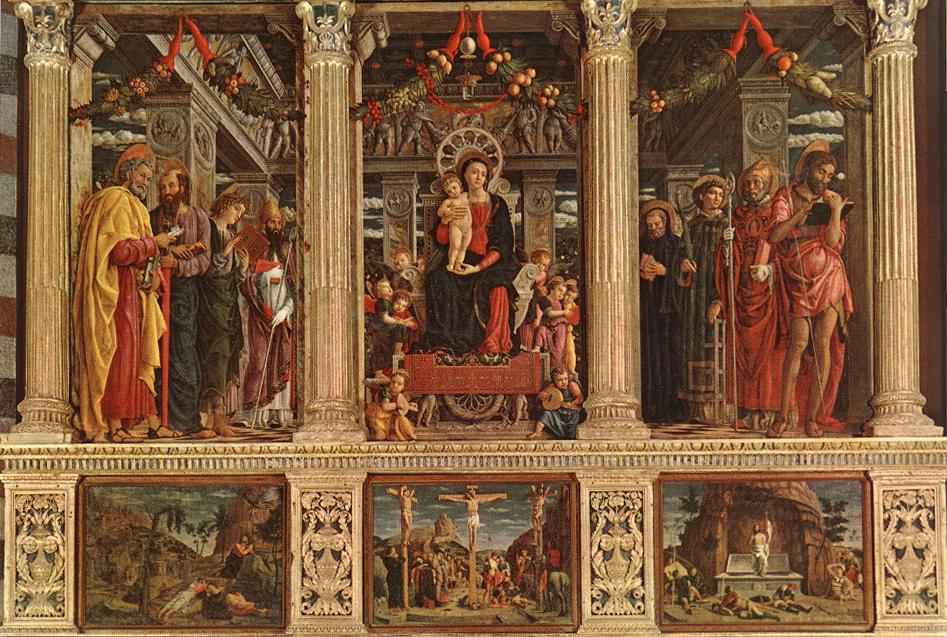
In 1460 Mantegna was appointed court artist for the Marquis of Mantua; he was paid a salary of 75 lire month, a huge sum which marked the high regard in which his art was held.
His Mantuan masterpiece was painted in what is now known as the Wedding Chamber of the Marquis’ castle: a series of frescoes including various portraits of the Gonzaga family, of which the Marquis was a member. It was finished around 1474.

After the Marquis died and Francesco II of Gonzaga was elected, Mantegna’s artistic commissions resumed. During this period he painted St. Sebastian, one of three he painted. The saint is tied to a classical arch and seen from an unusually low perspective, to create the dominance of his figure. The head and eyes are turned toward heaven and at his feet are two people intended to create a contrast between the man of faith and one attracted by earthly pleasures.
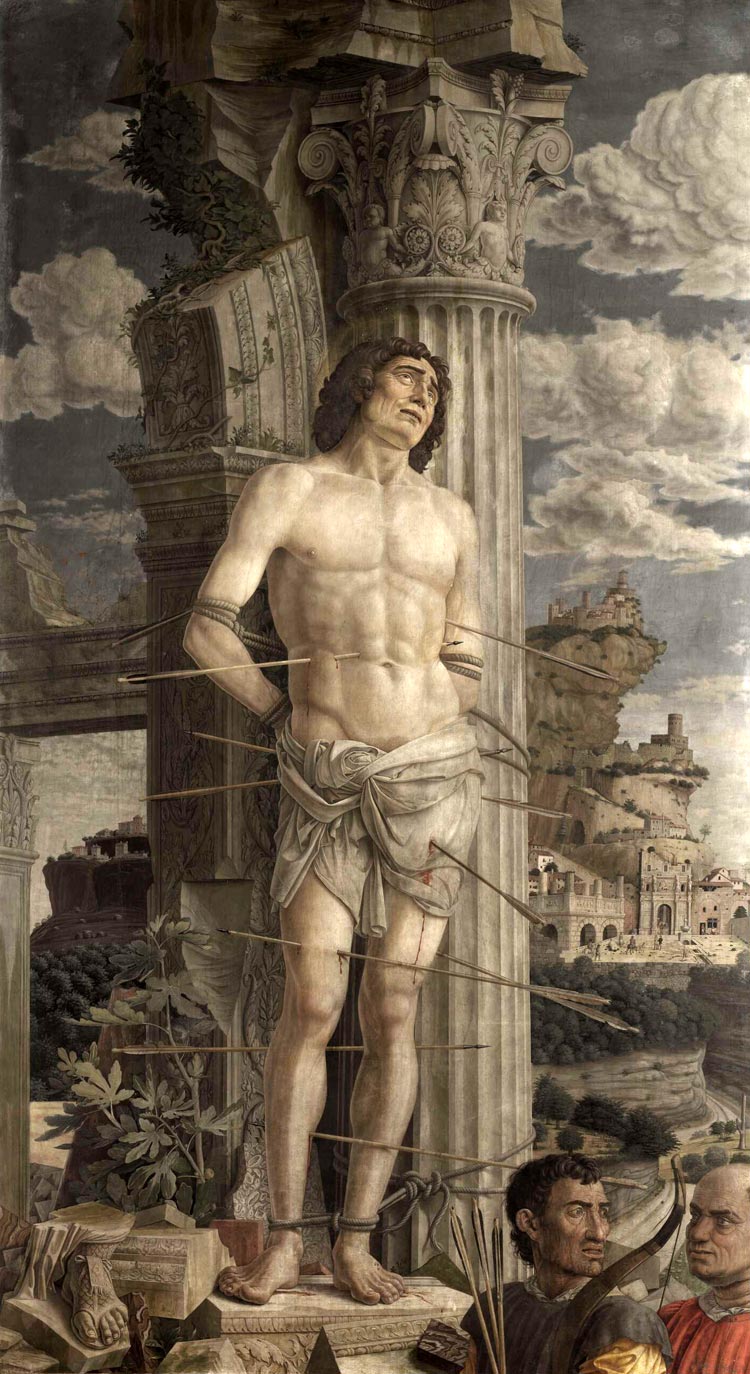
Pope Innocent VIII commissioned him in 1488 to paint frescos in the Belvedere Chapel in Rome, now destroyed, after which Mantegna returned to Mantua. There he finished nine tempera pictures of the Triumphs of Caesar, which he had probably begun before leaving for Rome. These are gorgeous depictions of the splendor of Caesar and are considered Mantegna’s finest work. Note the elephants in one of the processional scenes and then Caesar, a stony-faced figure high on his chariot, which is the last in the series. Caesar’s features were copied from Roman busts and coins, his body stiff as a sculpture, while the people around him are more alive.
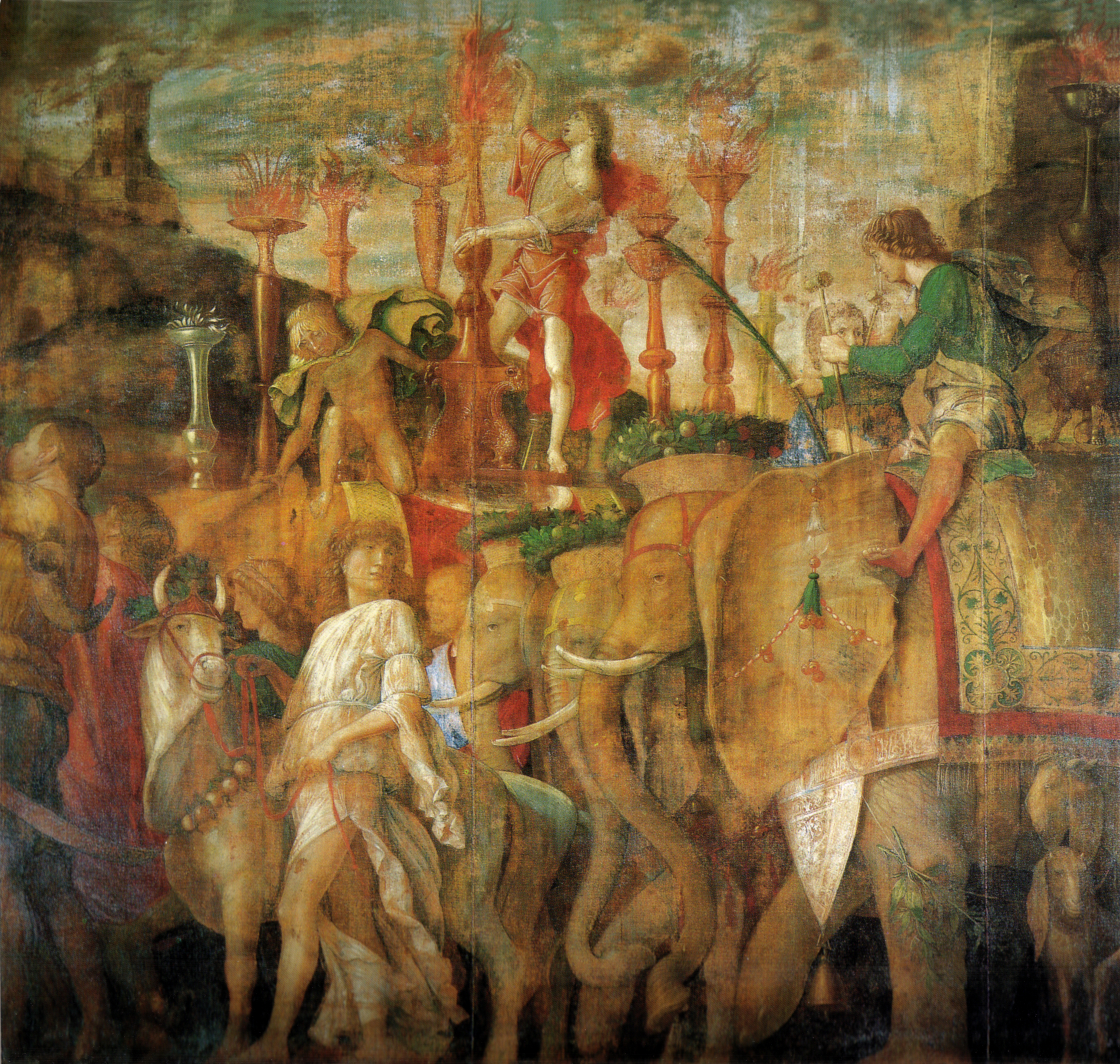
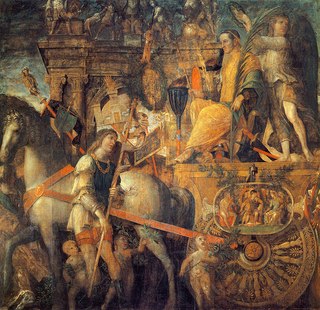
During this later period, Mantegna also painted the Lamentation of the Dead Christ, which portrays the body of Christ supine on a marble slab. This painting is often used to demonstrate Mantegna’s extreme and talented use of perspective. In this painting, there are rich contrasts of light and dark, with the realism and tragedy of the scene enhanced by the perspective. An analysis of the painting has shown that the size of the figure’s feet has been reduced since in their exact size, they would have blocked some of the body from that angle. Note Mantegna’s obvious knowledge of anatomy, particularly in the thorax, hand, and feet. This is one of my favorite paintings of his.
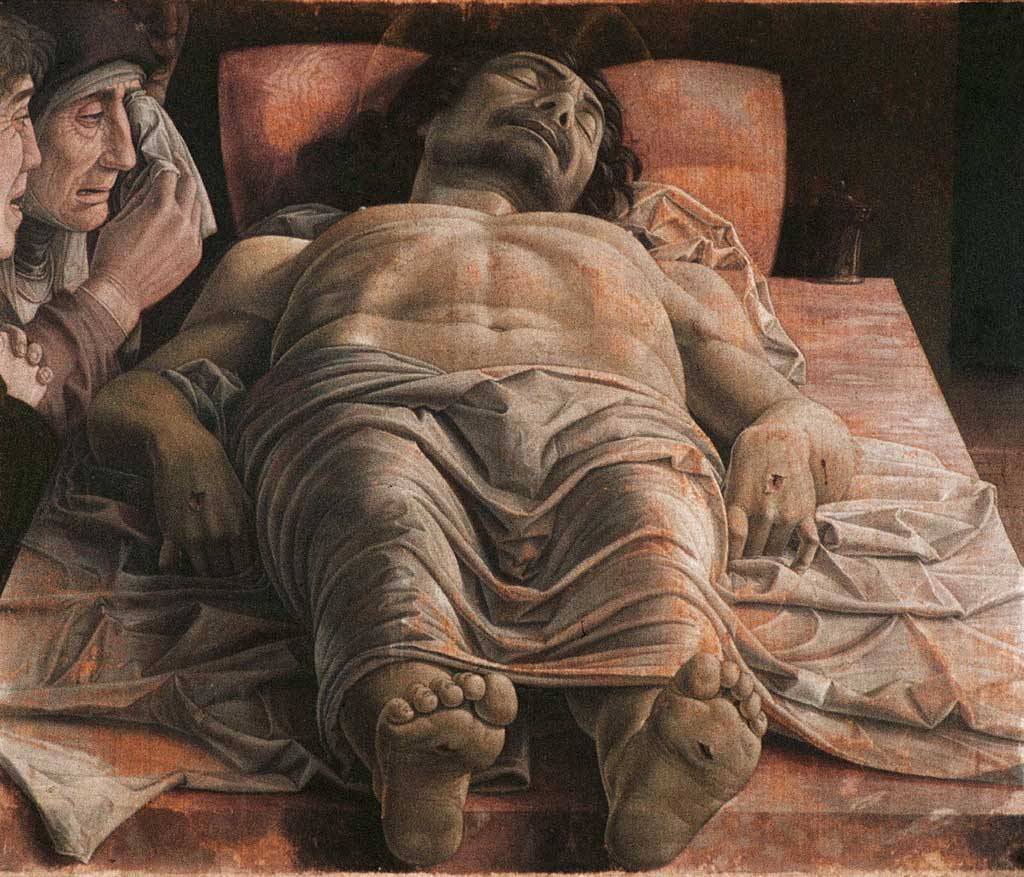
Mantegna died in Mantua in 1506. In 1516, a monument was erected in his honor by his sons in a chapel of the church of San Andrea in that city.
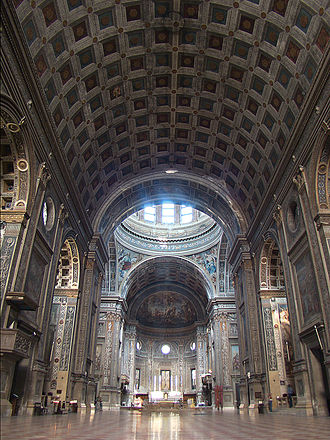
 Bust of Andrea Mantegna made by himself or Gian Marco Cavalli
Bust of Andrea Mantegna made by himself or Gian Marco Cavalli
If you like these Renaissance diversions I will find more to re-post!
![]()

At eleven he became an apprentice .. wow … just a year older than my son. Of course, there was the exploitation part later on, but we can never have true art without conflict, I suppose. Outstanding art. Church of San Andrea is stunning.
Mantegna has always been a favorite; this gave me a chance to see more~
Really fascinating! I’m not much into art, and had never heard of Mantegna.
Glad you stopped by and now you know about Mantegna!
I’ve been to Maggiore and went in the church and am wondering if I saw the panels without appreciating them. I hadn’t heard of Mantegna before so thanks for the introduction.
Lovely paintings, Gonzaga Family and Retinue especially, for how bright and sunny it is. His figures are so realistic. Anatomy was, as you say, certainly a specialty of his.
I love that you are forming your own opinions about these artists – could make you an art critique yet!
I’m enjoying adding things to my list of interests. We have a great thick book of Renaissance artists in our bookshelves that I haven’t had a chance to go through yet. Now I’ll be familiar with some of the names! 8D